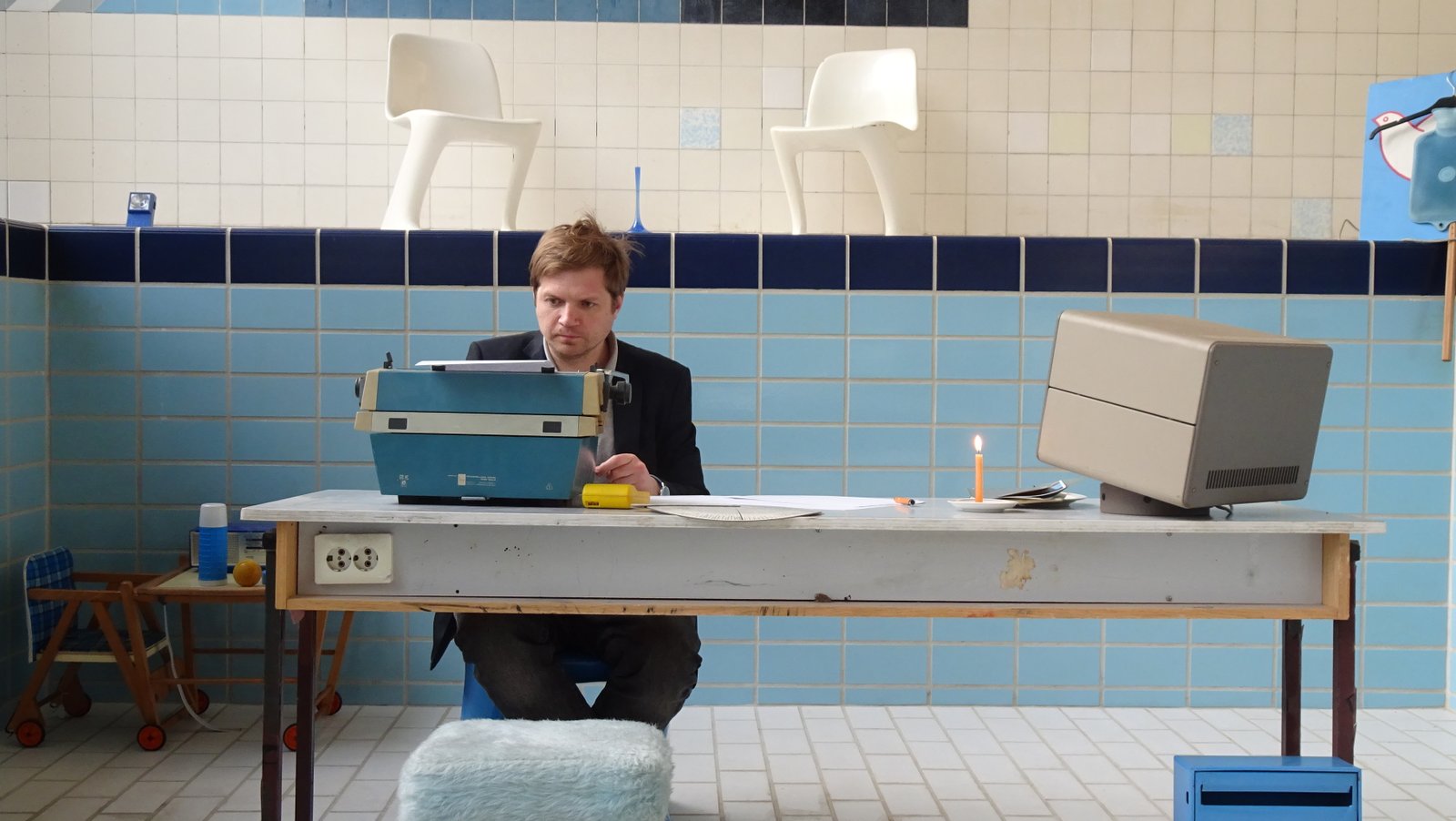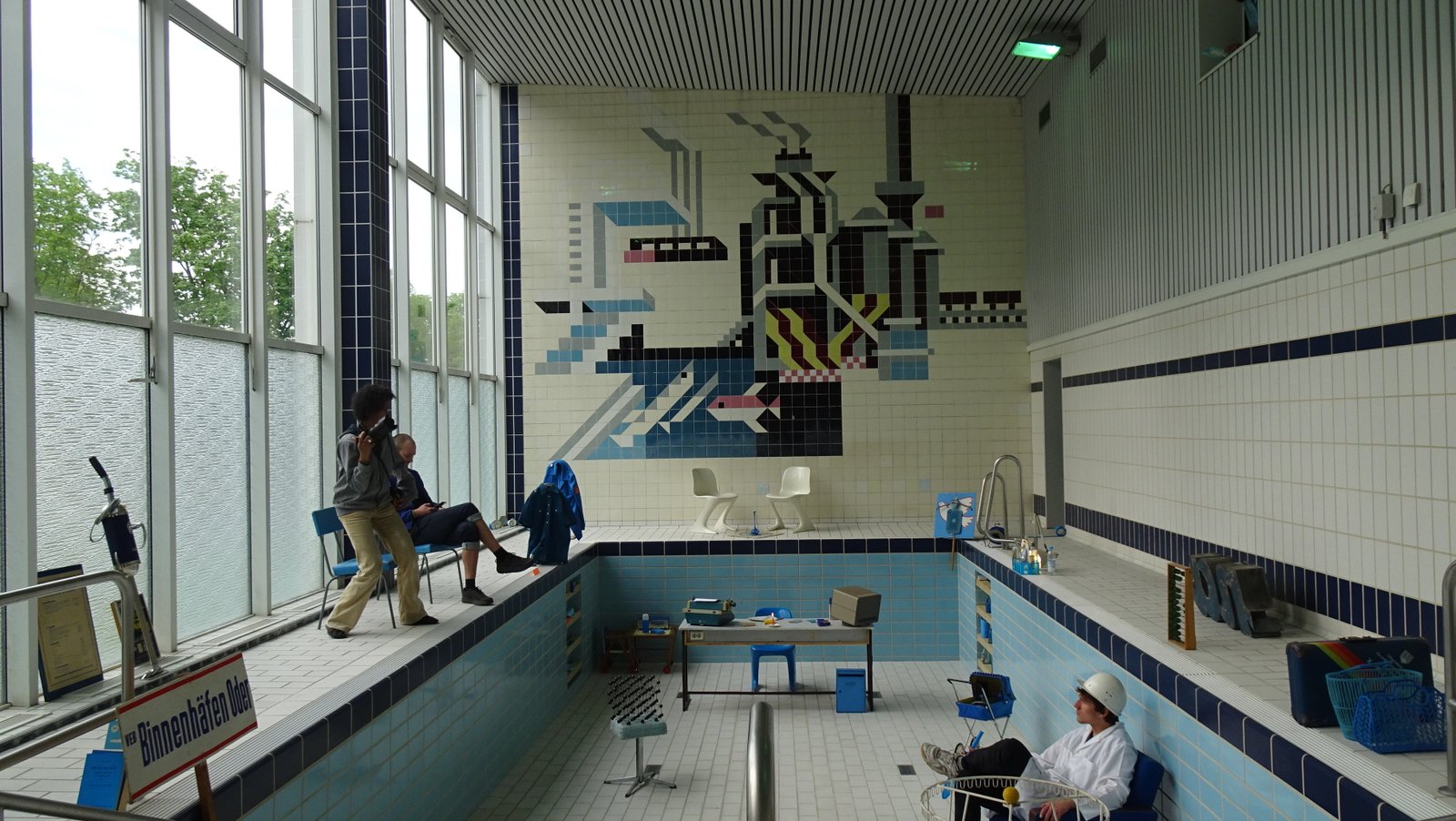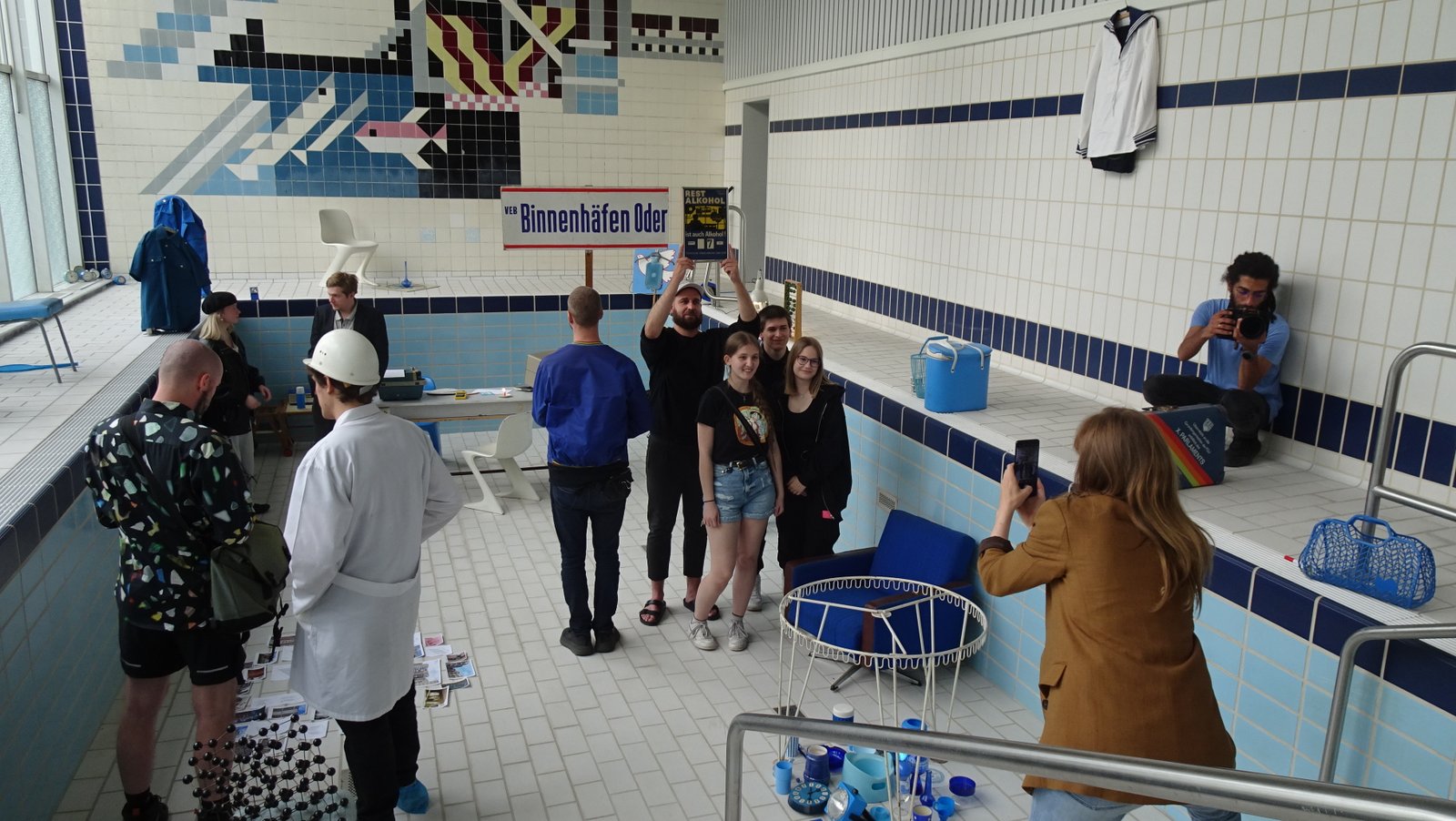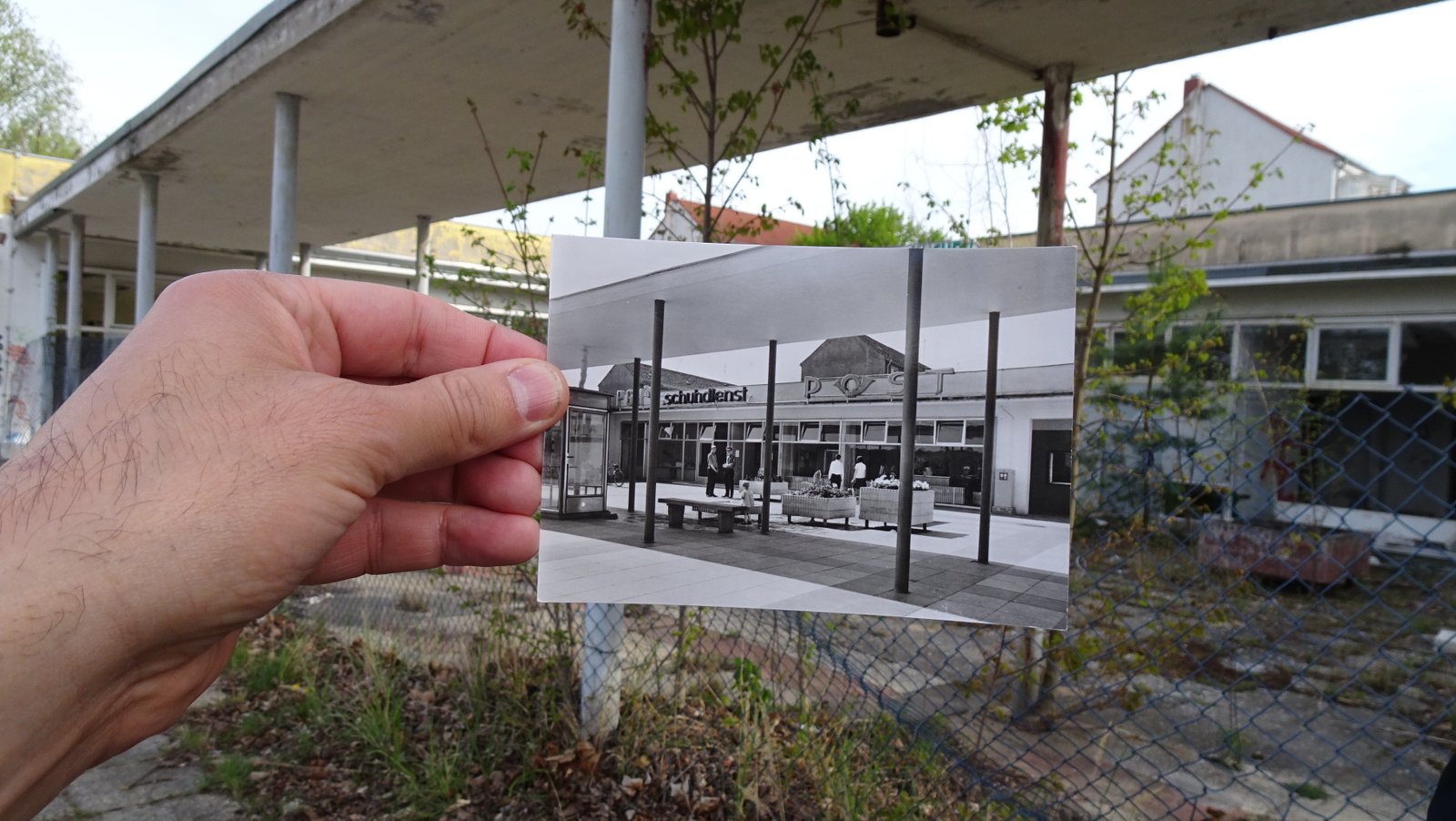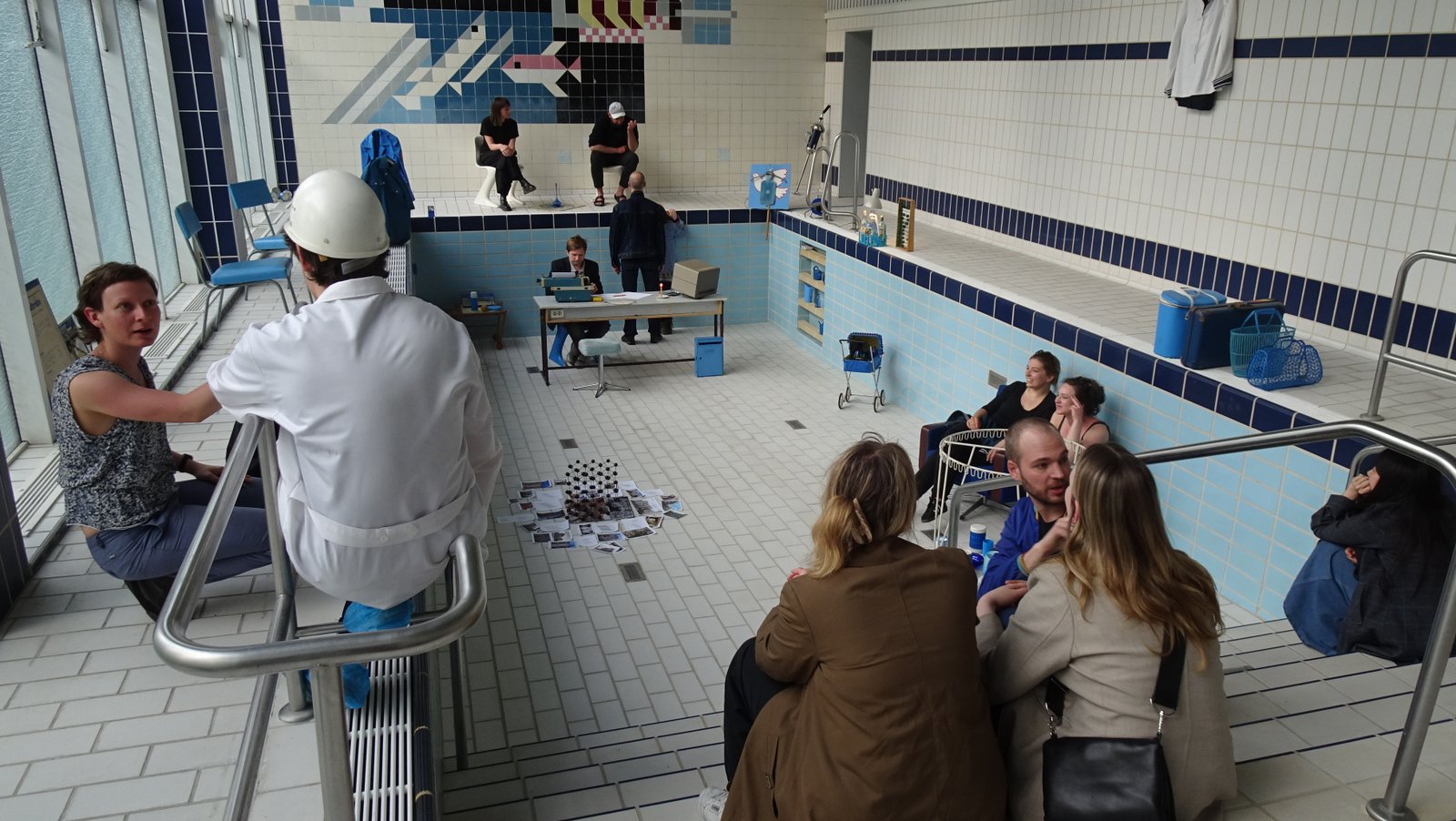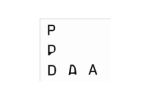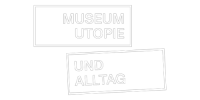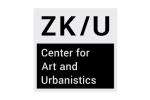Eisenhüttenstadt
Built after WWII as a settlement for steel mill workers, the town is in the region with one of the highest median ages in Europe. Due to shrinkage of the steel industry jobs and the shrinkage of the town’s population, one must revisit Eisenhüttenstadt urban structure. Aging population, among other aspects, is the challenge for deciding about which architecture and design should be preserved and for what purpose.
‘Learning to Swim Again’ in Eisenhüttenstadt
Located in the region with one of the highest median ages in Europe, Eisenhüttenstadt is forced to address demography in its urban projects. Due to shrinkage of the steel industry jobs (once the reason why the town was founded) and the shrinkage of the town’s population, one has to revisit Eisenhüttenstadt urban structure. Aging population, among other aspects, is the challenge for deciding about which architecture and design should be preserved and for what purpose. This event explored the possibility to re-tool the town’s high quality welfare infrastructures initially planned for youth and adolescence in the new conditions and for the new broader variety of user groups. It focused on the swimming pool in a school building, which makes up a part of now largely abandoned and unused Platz der Jugend (Youth Square). The event was about reopening the swimming pool for the public from Eisenhüttenstadt and beyond, after decades of being sealed and forgotten. In a longer-term perspective it was a flagship reopening before the anticipated re-launch and re-design of the entire Platz der Jugend in 2023-2024. The event’s main protagonist is Martin Maleschka - architect and heritage activist, one of the pioneers in archiving and promoting GDR urban design.
The ‘miracle’ of reopening the pool also required an effort of synchronizing it aesthetically and practically with the Instagram and TikTok environment of the old/new users. Preserved artifacts from the Eisenhüttenstadt Museum of Utopia and Daily Life were used as a prop for such synchronization. Playing with and exploring the potential of the prop together with the event visitors meant also exploring the new type of users for the re-launched Platz der Jugend. “Steelbruch” Club community, most of them in their 40-s, was an especially helpful reference point to start redefining what youth is now, as opposed to GDR period. In Eisenhüttenstadt post-growth conditions, ‘youth’ is likely to transform from demographic category into a lifestyle category - people with high demand for shared spaces with a high variety and intensiveness of social ties. Assembling new users and new social ties for 2020-s Platz der Jugend is like learning to swim again.
